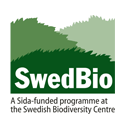Species in the Genus
Species in Kenya, Tanzania & Uganda
Description
Possible Causes of Confusion
Distribution in Kenya, Tanzania & Uganda
Habitats
Nesting
Crops Visited
Other Plants Visited
Economic / Ecological Importance
Threats
Conservation and Management Practices
Legislation (National and International)
References
Editors
Acknowledgements
Contact
Click on images to enlarge

Heriades species. Photo by Valter Jacinto (CC BY-NC-SA)

Heriades species. Photo by Sean McCann (CC BY-NC-SA)
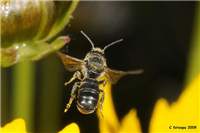
Heriades truncorum. Photo by Gustavo Fotoopa (CC BY-NC-ND)
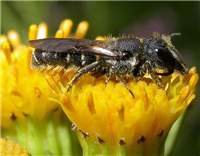
Heriades truncorum. Photo by Nigel Jones (CC BY-NC-ND)
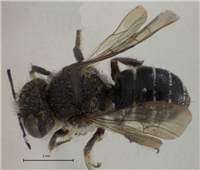
Heriades freygessneri (female) - pinned specimen. Photo: Connal Eardley
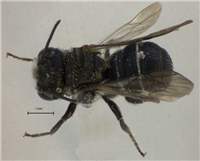
Heriades freygessneri (male) - pinned specimen. Photo: Connal Eardley
Summary
Honey bees are not the only bee species that are significant for human wellbeing. Heriades bees are a group of native bee species that do not produce honey but are important pollinators of crops and wild plants. Females have a sting, but they are not aggressive and will only sting if handled. Heriades bees are dark-coloured, of slender to medium build and have a fairly sparse covering of body hairs. They live independently of others (i.e. they are solitary) and build their nests in the ground. This fact sheet provides information about these bees to encourage farmers to understand and protect them to help ensure that their crops are effectively pollinated.
From a conservation and agricultural standpoint it is not necessary to recognise all the different bee genera. However, it is important to know that there is a large bee biodiversity. Different bee genera pollinate different plant species, although there is some overlap that acts as a buffer as bee populations wax and wane. For healthy ecosystems, including agro-ecosystems both diversity and abundance in the bee fauna is important.
Scientific Classification
Kingdom: Animalia
Phylum: Arthropoda
Class: Insecta
Order: Hymenoptera
Family: Megachilidae
Subfamily: Megachilinae
Tribe: Osmiini
Genus: Heriades Spinola, 1808
Species in the Genus
There are many bee species in the genus Heriades and they are found throughout the world.
Species in Kenya, Tanzania & Uganda
Nine species have been recorded from
Description
Heriades bees are not well known by local people (including farmers) in
Possible Causes of Confusion
Some insect species look like Heriades bees. These are very commonly mistaken for "black ants". Due to their small size, it is easy to confuse them with ants and other wasps feeding of floral resources in fields.
Distribution in Kenya, Tanzania & Uganda
The genus Heriades is found in most districts/regions of
Habitats
Bees of the genus Heriades can be found in various habitats (land-uses) in East Africa such as grasslands, natural forests, wetlands, marshlands, open habitats, protected areas, farmlands, rangelands, woodlands, woodlots (forest plantations), riparian areas.
Nesting
These bees are solitary bees with a variety of ground- and twig-nesting behaviours (Michener 2007). In Uganda, they are found nesting in shaded and dry soils structures found in different vegetation layers of secondary and primary forests.
Crops Visited
Bees of the genus Heriades in East Africa are polylectic, collect nectar and pollen from various flowering crop species belonging to different plant families found in
Other Plants Visited
In
Economic / Ecological Importance
Little information exists on the usefulness of these bees to the lives of the people in
Threats
In
Conservation and Management Practices
Little information exists on the usefulness of these bees to the lives of the people in
Legislation (National and International)
There is not yet any legislation in
References
1. Eardley CD, Gikungu M and Schwarz MP (2009) Bee conservation in Sub-Saharan Africa and
2. Eardley CD and Urban R (2010). Catalogue of Afrotropical bees (Hymenoptera: Apoidea: Apiformes). Zootaxa, 2455: 1–548.
3. Michener CD (2007) The Bees of the world, the John Hopkins University Press,
Editors
Théodore Munyuli, Busitema University - Uganda; Muo Kasina, Kenya Agricultural Research Institute (KARI) - Kenya; Juma Lossini, Tropical Pesticides Research Institute (TPRI) – Tanzania; John Mauremootoo, BioNET-INTERNATIONAL Secretariat – UK; Connal Eardley, Plant Protection Research Institute (PPRI) – South Africa.
Acknowledgements
We recognise the support from the Kenya Agricultural Research Institute (KARI), Tropical Pesticide Research Institute (TPRI) –
Contact
BioNET-EAFRINET regional coordinator: eafrinet@africaonline.co.ke





